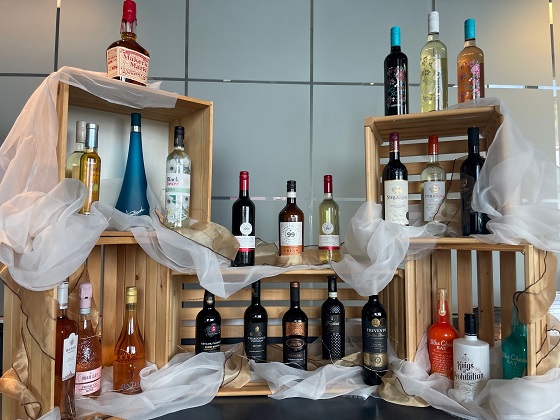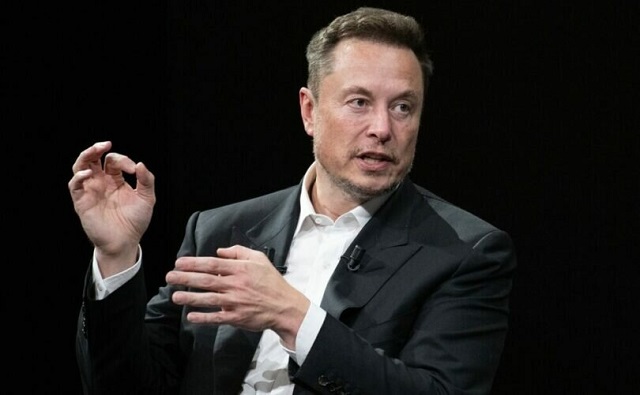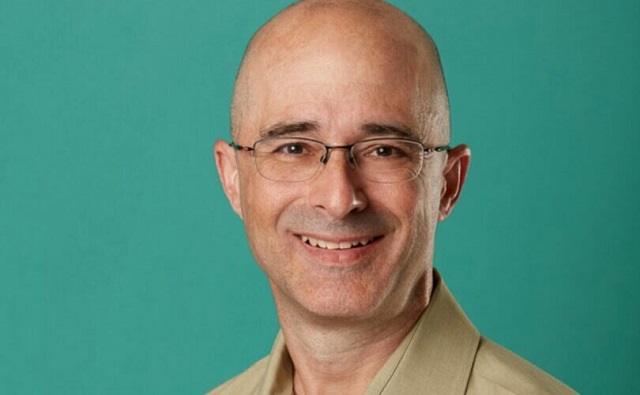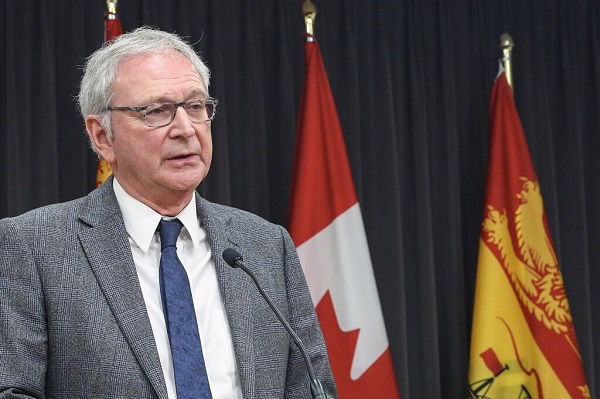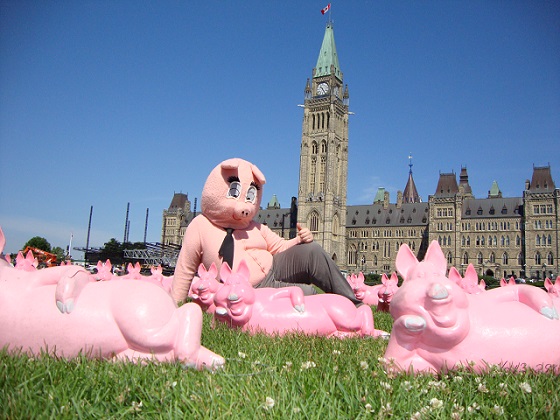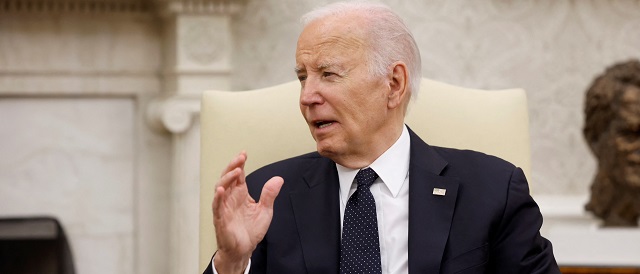Frontier Centre for Public Policy
Canada’s Indigenous burial hoax is still very much alive
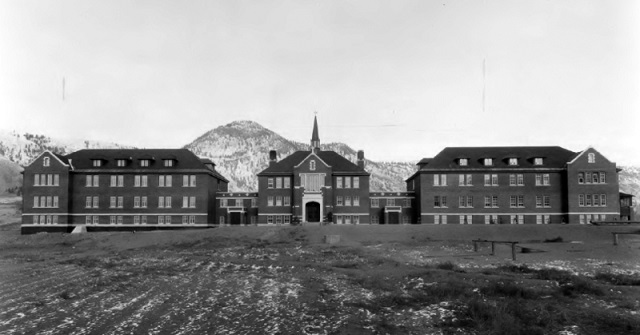
From the Frontier Centre for Public Policy
The Kamloops “confirmation” – growing more inconclusive all the time – consisted solely of signs of sub-surface soil irregularities: GPR cannot detect human or other organic material, and is only reliable in finding graves in known cemeteries.
History shows that many hoaxes, fake news stories, and conspiracy theories have proven nearly unassailable, even when proven false. So far, it seems a British Columbia burial canard will be added to this list.
The assertion that thousands of Indian Residential School children are buried in unmarked graves across the country, many of them victims of genocide, has been bandied about for decades. Its current promotion skyrocketed in mid-2021 following an Indigenous media release that was heard around the world:
May 27, 2021, Kamloops – It is with a heavy heart that Tk’emlúps te Secwé pemc Kukpi7 (Chief) Rosanne Casimir confirms an unthinkable loss that was spoken about but never documented by the Kamloops Indian Residential School. This past weekend, with the help of a ground penetrating radar (GPR) specialist, the stark truth of the preliminary findings came to light – the confirmation of the remains of 215 children who were students of the Kamloops Indian Residential School.
Although this claim and others like it are slowly being exposed as false, most Canadians still believe them.
This assertion is one of the findings of a February 2024 Macdonald-Laurier Institute research report that found “by a 79 to 21 ratio, respondents believed that ‘215 Indigenous residential school children were buried in a mass grave on school grounds in Kamloops, BC,’” a story lacking factual or historical evidence “but which most media and virtually all politicians have been reluctant to contradict.”
The Kamloops Burial Hoax
The Kamloops “confirmation” – growing more inconclusive all the time – consisted solely of signs of sub-surface soil irregularities: GPR cannot detect human or other organic material, and is only reliable in finding graves in known cemeteries.
Still, immediately following the Kamloops announcement, there were angry vigils, public displays of grief and shame, solidarity speeches, promises to revolutionize society, and the burning down of dozens of predominantly Roman Catholic churches.
The furore attending the Kamloops discovery accelerated as later findings were announced in other provinces, with the number of purportedly identified graves soon exceeding 2,000. Frequently heard among activists was the cry that these announcements were proof of a hidden “Holocaust” or “Final Solution” perpetrated against Aboriginal students by Canadians working in residential schools. The Kamloops school was alleged to have been a “concentration camp” and the 2021 “burials” evidence that there had been a horrific crime.
Evidence Challenging the Hoax
Entrenched public opinion on what increasingly looks like a burial hoax was damaged on August 18, 2023, when the 14 closely spaced soil disturbances detected using GPR in the basement of the Roman Catholic church on the site of the former Pine Creek Residential School were found to contain animal bones and debris, not human remains.
These findings were preceded by several other inconclusive discoveries.
In August 2021, a team of researchers in Shubenacadie, Nova Scotia, conducted an excavation at the former Shubenacadie Residential School in search of clandestine burials, but to no avail. Two months later, a search was conducted for unmarked graves on the site of the former Camsell Indian Hospital in Edmonton. The facility treated Indigenous people, many of whom suffered from tuberculosis, and some Indigenous leaders claimed that the dig would uncover patients that had been buried there, but no such evidence was discovered.
One discovery still making headlines is the unearthing of child-sized skeletons in a reputed “mass grave,” most likely the result of repeated accidental excavation and haphazard reburial by community grave diggers in the community cemetery on Alberta’s Saddle Lake Cree Indian Reserve. Without a shred of evidence, community members have attributed the death of some of these children to murder at the hands of a school official that was never reported to the police.
That there are no missing or secretly buried students who attended the reserve’s Indian Residential School is proven by the absence of relatives in the past or present searching for loved ones who never returned home. By comparison, in all of Canada, only two distant relatives have been identified as looking for their ancestors. In both cases, the children’s death certificates were found “buried” in the provincial archives whose records showed they were buried correctly on their home reserves.
Two easily located students’ records are surely vastly different from the “15,000 to 25,000 … maybe even more” children Murray Sinclair, former Chair of the Truth and Reconciliation Commission of Canada, has claimed may be missing.
It is becoming increasingly clear that the Kamloops claim, and the many copycat allegations it fomented, are fallacious. More commentators are awaking to the “mass grave” propaganda, even though the Canadian mainstream media barely responded to the Pine Creek discovery of presumptive graves containing no human remains, an important reason this hoax is still very much alive.
Indigenous Elites Support the Hoax
Among the most prominent of many Indigenous perpetrators of these inflammatory claims of murder, mass graves, and even genocide has been RoseAnne Archibald, former National Chief of the Assembly of First Nations, Canada’s largest and best-known Indigenous lobbying group.
At a July 15, 2021, Kamloops Indian Band public presentation, Archibald maintained that the Kamloops case told the world “how 215 innocent children died and were buried in unmarked graves” and that this “crime against humanity” constituted “genocide.”
Completely ignoring the caution of all the known researchers conducting these band-sponsored GPR searches, Archibald added that “this ground penetrating technology is revealing evidence, undisputable proof, that crimes were committed.”
In an interview broadcast by the BBC on August 4, 2021, Archibald charged that Canada’s Indian Residential Schools were “designed to kill” Indigenous children. “And we are seeing proof of that,” she said. “1,600 children, innocent children, have been recovered so far…. We are going to be in the thousands upon tens of thousands of children found. I am not sure how you can say that the recovery of that many little children does not signify what it is – genocide.”
Chief Archibald failed to mention that not a single child’s body “has been recovered so far” or that three years later, no bodies have been exhumed.
A lack of verified evidence of children buried in unmarked graves, some supposedly after priests murdered them, has done nothing to deter the federal government from funding several lavish programmes meant to continue this effort. One of these initiatives was the August 10, 2021, announcement of the allocation of $321 million to help Indigenous communities search burial sites at former residential schools and to support survivors and their communities.
Such programmes have doubtless hardened the public opinion expressed in the Macdonald-Laurier Institute poll. Allied beliefs discovered by the study are also at work: 54 percent of all respondents consider the legacy of Indigenous colonialization to be a problem today; 55 percent vs. 45 percent believe that Indigenous peoples should have a unique status because they were here first; by 48 percent for to 41 percent against, Canadians believe the harm from Indigenous residential schools will continue rather than be resolved; and 19 percent of Canadians think children at residential schools were “purposefully killed” with another 39 percent saying that children also died of neglect.
But the most critical determinant of the exceptionally high belief in the “killing field” at the Kamloops residential school lies in “political culture in Canada,” according to the study: “Much seems to come down to the culturally left-liberal political culture in Canada. That is, the elite norms that hold sway in the media and among mainstream politicians are predominantly culturally leftist.”
As the report says: “It is well established that the media and politicians can cue the issues they want voters to focus on, making decisions to elevate some questions and ignore others.”
This obvious assertion allowed the Macdonald-Laurier Institute report to argue that:
Canadians’ relatively high trust in institutions and cultural elites grants considerable latitude to them to frame the issues that people talk about while neglecting other questions…. There is no better illustration of this than the Kamloops mass graves question, where the code of silence practiced by the media and mainstream political parties has resulted in a clear majority of the public believing this false account.
On the Indigenous side, the Kamloops discovery, and its promise of lots of money, quickly unleashed a flood of similar GPR searches across Canada. To date, the unmarked graves are presumed to hold the remains of mainly unknown and unaccounted for individuals, primarily children, at 26 sites that have been identified since 1974[RC1] .
The allocation of funds to search for graves was followed in June 2022 by appointing an investigator to work with Indigenous communities and the government to propose changes in federal laws, policies, and practices related to unmarked graves at residential schools.
Kimberly Murray, former Executive Director of the Truth and Reconciliation Commission of Canada, was given a two-year appointment as Canada’s “independent special interlocutor for missing children, unmarked graves, and burial sites associated with the Indian Residential Schools.”
Murray’s appointment was simply one part of a campaign, whether deliberately organized or not, to label Canada as a genocidal country long engaged in the systematic murder of Indigenous children whose remains were dumped into mass graves.
Attempts to Stop Hoax Challengers
On June 16, 2023, Murray released an interim report arguing “urgent consideration” should be given to legal mechanisms to combat what activists have termed “residential school denialism.”
Unsurprisingly, her “opening words” in the report stated:
… my role is to give voice to the children. It is not to be neutral or objective – it is to be a fierce and fearless advocate to ensure that the bodies and Spirits of the missing children are treated with the care, respect, and dignity that they deserve” even if that “conflicts with my responsibility to function independently and impartially, in a non-partisan and transparent way.
This attack on the fundamental precepts of objective search for truth based on reason, logic, and scientific evidence rooted in a scientific paradigm that clashes with Indigenous ways of knowing gave her leave to label genocide denial as an “attack” on her version of the truth whenever there were announcements of the discovery of possible unmarked graves.
Moral certainty based on Indigenous ways of knowing, not objective evidence based on science, allowed Kimberly Murray to state that the Canadian government has a role in combatting “denialism,” an inflammatory distortion of what is simply scientific scrutiny, by giving “urgent consideration” to the legal tools that already exist to address the problem, including civil and criminal sanctions.
“They have the evidence. The photos of burials. The records that prove that kids died. It is on their shoulders,” Murray told a crowd gathered on the Cowessess Indian Reserve in Saskatchewan on June 16, 2023.
But there is no photographic evidence of children buried beside the shuttered Kamloops Indian Residential School nor at any of the other former Indigenous schools in Canada.
The only photographic evidence shows typical church burials and thousands of schoolchildren engaged in everyday activities. As for the records, they reveal that the few residential school children who died at the schools were buried in school cemeteries beside school staff members or the nearest reserve cemetery. But most deceased children were interred on their home reserves. All of them received a proper Christian burial after they died, most succumbing to contagious diseases like tuberculosis over which Indigenous people had little natural immunity.
Several of those labelled denialists have argued that there are few missing students, only missing records about their school attendance and death. On March 21, 2023, Murray inadvertently confirmed this assertion in her testimony before the federal government’s Standing Senate Committee on Indigenous Peoples when she said:
The family doesn’t know where their loved one is buried. They were taken to a sanatorium, an Indian residential school. They were just told … that they died. I can get the name of that [missing] individual, I can log into the National Centre for Truth and Reconciliation, find the name of the student, find a record, which will lead me down to another record, which will lead me to Ancestry.com. Why are families having to go to my office to find the death certificate of their loved one on Ancestry.com when the provinces and territories won’t just provide those records?
And then those records will lead you to where they’re buried, hundreds of miles away from their home community. We are now seeing families going to cemeteries. I get this a lot. The children aren’t missing; they’re buried in the cemeteries. They’re missing because the families were never told where they’re buried. Every Indigenous family needs to know where their child is buried. When we find that, and we know that they’re going to have a little bit of closure now, they know the truth and they have some answers, that’s what keeps us going. [emphasis added].
Even though there is little evidence that thousands of children’s deaths were not reported to their parents, and lots of evidence that this is not true, including the refusal of the National Centre for Truth and Reconciliation to remove the names of children whose cause of death and place of burial have been found, from its Memorial Register, a list now totalling over 4,100 named and unnamed “children who never returned home from residential schools.”
Murray’s statement contradicts the established public narrative about missing children. None of these facts have ever been communicated to the public by the mainstream media.
The latest anti-denial effort emanated from the Canadian Senate Standing Committee on Indigenous Peoples, which released a 30-page report on July 19, 2023, titled “Honouring the Children Who Never Came Home: Truth, Education and Reconciliation.” The study recommends “that the Government of Canada take every action necessary to combat the rise of residential school denialism.”
According to lawyer John Carpay, president of the Justice Centre for Constitutional Freedoms:
The use of state resources to promote one opinion on a scientific or historical matter is nakedly totalitarian. Apart from that, the senators’ aggressive language calling on government to “take every action necessary” suggests that it would be okay for the government to punish the likes of Michelle Stirling, Mark DeWolf, and others who dare to disagree with the dominant narrative.
The report fails to define “denialism” yet claims it “serves to distract people from the horrific consequences of Residential Schools and the realities of missing children, burials, and unmarked graves.” This omission suggests that “denialism” means disagreeing with the dominant narrative that Indian Residential Schools were houses of horror marked by racism and genocide.
Decades of an Aboriginal blood libel assertions hang over all these claims, with an army of activists and their supporters acting as its eager propagandists. It is long past time to find the underlying cause of this fake news by exhuming the reputed unmarked graves and identifying any remains they might contain. If that never happens, Canadians will be paying vast amounts forever to keep this hoax about missing and murdered Indigenous children alive.
Hymie Rubenstein is editor of REAL Indigenous Report and a retired professor of anthropology, the University of Manitoba.
Frontier Centre for Public Policy
The Toppling of the woke authoritarians
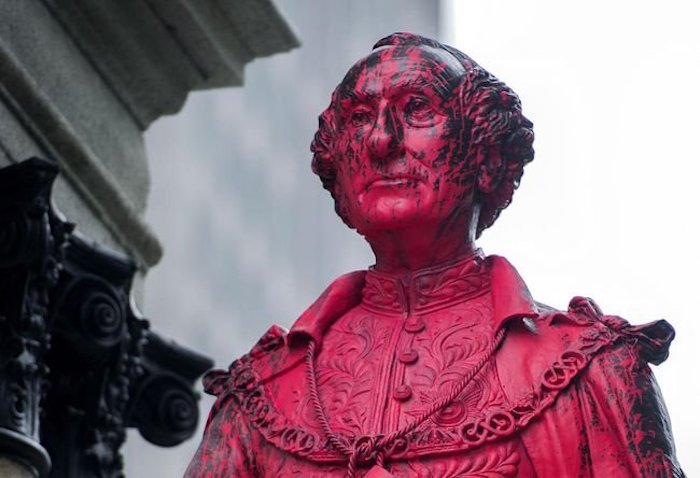
From the Frontier Centre for Public Policy
By Tom Slater, editor of Spiked.
If you – like me – loathe authoritarian, faux-progressive scolds, it’s actually been a good few years. I know it might not seem like it, with the ‘Queers for Palestine’ contingent currently running riot on American university campuses, but hear me out. Across the Anglosphere, one politician after another, beloved by the media but increasingly disliked by the public, have exited the stage, often jumping before they were pushed.
This week, we bid farewell to the SNP’s Humza Yousaf, whose year-and-a-bit-long premiership in Scotland produced more scandals and disparaging nicknames – Humza Useless, Humza the Hapless, etc – than it did any positive legacy. In the end, he proved himself to be as illiberal as he was inept. His Flagship policy, the Orwellian, broad-sweeping Hate Crime Act, alarmed voters and sparked a tsunami of spurious complaints, many of them about Yousaf himself. We can only hope it will now collapse under the weight of its own absurdity. (One thing’s for sure, voters are furious about it: only one in five Scots wants the Hate Crime Act to stay.)
Then, Humza managed to accidentally collapse his own government. He was apparently surprised to learn that his decision last week to suddenly terminate his party’s coalition agreement with the Scottish Greens –following some internal friction over trans and environmental issues – left the Greens angry and unwilling to prop up his minority government. As his short reign ends, Yousaf has at least managed the incredible feat of being even more unpopular than the leaders of the widely disliked Tories and the crackpot Greens, with an approval rating of -47. Yousaf – who was crowned first minister by SNP members and never gained a mandate from the people – was in negative numbers for all of this tenure.
Only in March, democrats were also toasting the demise of another despised, virtue-signalling leader who owed his position to elite politicking rather than democracy. Namely, Leo Varadkar. He became Irish taoiseach in 2017, after Fine Gael made him party leader. Even then, he had to rely on his support within the parliamentary party – in Fine Gael’s leadership-election process, the politicians are given much more weight than the members – given the membership voted two-to-one for his opponent. When Varadkar led his party to the polls in 2020, Fine Gael actually lost seats. Only by getting into bed with Fianna Fáil, his party’s supposed bitter rival, was Varadkar able to cling on to power.
Like Yousaf, Varadkar was a visionless leader who came to see superficial ‘social justice’ as his route to a legacy. While nominally on the centre-right economically, he was credited by international media with ‘Ireland’s transformation into a secular progressive state’. He clearly warmed to this image of himself, even if the Irish people did not. ‘We have made the country a more equal and more modern place’, he said in his resignation speech (my emphasis), ‘when it comes to the rights of children, the LGBT community, equality for women and their bodily autonomy’. This notion that Varadkar’s Ireland – like Yousaf’s Scotland – needed to be dragged kicking and screaming into the 21st century, that voters and their values desperately needed a politically correct makeover, gave the semblance of substance to his otherwise hollow premiership.
Ireland’s historic 2018 referendum, in which 66 per cent voted to overturn one of the Western world’s strictest abortion bans, was indeed a seismic blow for freedom. But Varadkar can hardly take credit for the decades of grassroots campaigning that got it over the line. His fingerprints were, however, all over the ‘family’ and ‘care’ referendums earlier this year, which produced two historic, humiliating defeats. Varadkar utterly failed to convince the people that this campaign to change the wording of the Irish constitution – to update the meaning of ‘family’ and to remove references to women’s role in the home – was anything other than an exercise in elite moral preening. He even insisted on holding the vote on International Women’s Day, just to heighten the sense of moral blackmail, even though doing so meant radically shortening the time the pro-amendments campaign had to prepare. The ‘family’ and ‘care’ amendments were rejected by 67 and 74 per cent of voters respectively. Varadkar tried to limp on, noting all major parties had backed the amendments. But this ballot-box revolt left his authority in tatters. He resigned two weeks later.
When Varadkar wasn’t talking down to voters, he was trying to censor them. Before he resigned, he had been toiling to pass Ireland’s own insanely draconian hate-speech bill, aimed at expanding restrictions on ‘incitement to hatred’ and adding gender to the list of ‘protected characteristics’, opening the door to criminalizing people for refusing to bow to the trans cult. To Scots, this may sound familiar. Indeed, it was as if Varadkar and Yousaf were competing to be the most censorious. Where Scotland’s Hate Crime Act criminalizes even private conversations in your own home (removing the so-called dwelling defence), Ireland’s proposed legislation would criminalize mere ‘possession’ of offensive material, including memes. From your phone’s camera roll to the family dinner table, no area of life is now safe, it seems, from the state censors. Having sailed through the Dáil in April 2023, the bill is now stuck in the upper house, after an almighty backlash from voters and civil libertarians. (Varadkar’s successor, Simon Harris, says he intends to table amendments to assuage voters’ concerns.)
Say what you will about Leo and Humza, at least they were occasionally – unintentionally – entertaining. Both were famously gaffe-prone. (Who could forget Yousaf’s tumble from his knee scooter, or Varadkar’s Monica Lewinsky joke in DC?) The same cannot be said for Nicola Sturgeon, the former Scottish first minister, Yousaf’s mentor and the walking embodiment of the prickly puritanism and mad identitarianism of our age. She looked upon the masses as reactionary filth – she once smeared her opponents as ‘transphobic… deeply misogynist, often homophobic, possibly some of them racist as well’ – all while ushering in the most reactionary agenda Scotland has seen for decades. Her already hated ‘gender self-ID’ reforms collapsed in 2023, when the public realized they would mean putting rapists in women’s prisons – which, by a grotesque quirk of fate, had become the ‘progressive’ position.
You could be forgiven for forgetting that the SNP was founded to achieve the ‘liberation’ of Scotland from the UK, rather than the ‘liberation’ of perfectly healthy genitals from the bodies of confused young people. It speaks to the grip of woke identity politics over the technocratic, centre-left imagination that Sturgeon was not only sidetracked but, in part, brought down by her dogged, fanatical pursuit of ‘trans rights’. Then again, social engineering has characterized much of the SNP agenda since it first came to power. Ending the Union has often taken a back seat to reforming Scots, from the SNP’s crackdown on offensive football chants to its profoundly creepy ‘named person’ scheme, which would have assigned a state guardian to every child had it not been held up in the courts on human-rights grounds.
One of the hallmarks of our woke, technocratic ruling class is that they increasingly define themselves against their own citizenry. Leaders today draw their moral authority not from the democratic endorsement of their electorates but from their ability to rise above the throng, to oppose our supposedly backward values. Skim-read the resignation speeches of Sturgeon, Yousaf and Varadkar and you’ll find them all peppered with rueful references to ‘populism’, ‘polarization’ and the supposed ‘toxicity’ of contemporary discourse. Voters are forever the implied villains of the piece, for refusing to just shut up and let the adults get on with governing.
All this speaks to why elites have become so insanely authoritarian in recent years. What we used to call illiberal liberalism, along with greenism and multicultural identity politics, has held a malign sway over our rulers for decades. But all these tendencies have been sent into overdrive over the past eight years. In the wake of Brexit and the rise of a more populist, democratic politics, our leaders have been confronted with the chasm that exists between their values and ours. And having failed to convince, they can only compel, coerce, punish. This self-righteousness has also bred an obnoxious, unabashed narcissism. In her resignation speech, Sturgeon used the words ‘I’, ‘me’ and ‘my’ 153 times. ‘Scotland’ appeared 11 times.
Covid added further fuel to this fear and loathing of the populace.
Politicians, already gripped by the panic about supposedly dim, irresponsible voters being manipulated by disinformation, gave full vent to their most authoritarian tendencies – locking us down and raging against any dissent. Arguably, no one did so as enthusiastically as New Zealand’s Jacinda Ardern, who was showered with praise by the globalist great and good for subjecting her own citizens to an unhinged ‘Zero Covid’ experiment. Naturally, she also became a campaigner for global censorship during this time, telling the United Nations in 2022 that ‘misinformation’ constituted a modern ‘weapon of war’, and calling on global leaders to confront climate-change deniers and peddlers of ‘hate’. She announced her resignation as prime minister and Labour leader in January 2023, just as she was enjoying her lowest-ever poll ratings while in office, all to the swoons of international media. Labour was wiped out later that year, in the worst election defeat of a sitting NZ government for decades.
Politicians seem to be going out of their way to alienate and infuriate voters, pursuing unpopular policies at the very same time as they demonize and clamp down on debate. On climate, they have embraced a programme of national immiseration, to be borne on the backs of the working classes, who are expected to just accept being colder, poorer and less mobile. On immigration, they have thrown open the doors to migrants and refugees on an unprecedented scale, without seeking public consent and without ensuring proper provision for – or vetting of – those arriving. On culture, they have embraced a new form of racism under the banner of anti-racism, and a misogyny and homophobia posing as ‘trans inclusion’. Meanwhile, voters are beginning to realise that all those calls to censor ‘hate’ and ‘misinformation’ are calls to censor them.
Even in Justin Trudeau’s Canada, a land long held up as ‘immune’ to populism, a backlash is stirring. The Canadian premier embodies woke authoritarianism in its most cartoonish form. When, in 2018, a woman confronted him at a corn roast about Canada’s enormous influx of refugees, he accused her of ‘racism’ to her face. Hell, he once corrected a woman who said ‘mankind’ instead of ‘peoplekind’. Worse still, his outrageous clampdowns on dissent make his contemporaries look subtle by comparison. When truckers rebelled against Covid mandates, he invoked emergency powers to freeze their bank accounts, break up their rallies and forcibly clear the streets. Of course, he’s also now trying to pass his own piece of censorship legislation, Bill C-63 – which, among other alarming provisions, would allow for people to be placed under house arrest if they are deemed likely to commit a hate crime. You know, like ‘precrime’ in Philip K Dick’s The Minority Report. Incidentally, Trudeau’s Liberal Party is currently trailing the Conservatives by a steady 19 points in the polls.
Wokeism. Climate extremism. Kindly authoritarianism. This is now the operating system of Western, ‘centrist’ politics. Take Joe Biden, America’s somnambulant president. At the 2020 election, even anti-woke liberals insisted this scion of the old Democratic establishment – a man so old he can’t even be slurred as a Boomer (he’s actually Silent Generation) – was the man to return America to normality, before the BLM riots and MAGA mania. ‘If you hate wokeness, you should vote for Joe Biden’, declared a piece in the Atlantic, arguing that Trump is to the culture war what kerosene is to a dumpster re, fueling the woke extremes. That take has aged like milk. On his first day in office, Biden signed sweeping Executive Orders on ‘racial equity’ and gender ideology. He later tried to apportion Covid relief on the basis of race. He’s a Net Zero zealot. He has allowed the justice system to be weaponised against his opponents. He invited Dylan Mulvaney to the White House, FFS. Biden’s return to ‘normalcy’ has been so successful millions of Americans are starting to wonder if Donald Trump might actually be the saner choice.
Everywhere, political leaders are pursuing the same batshit, authoritarian policies and everywhere they are colliding with reality – and the electorate.
Yousaf, Varadkar, Sturgeon and Ardern may have stepped down, but they did so in the face of growing public fury. Biden and Trudeau may not get the same privilege. Plus, while technocratic centrists remain in power or the ascendancy in various nations, they are at least being forced to adapt, albeit insincerely, to the new political reality – one in which voters are increasingly unwilling to put up with the punishing green policies, out-of-control transgenderism and woke censorship that have been rammed down their throats for years. And so, Labour’s Keir Starmer has suddenly worked out what a woman is. The SNP is watering down some of its ludicrous. Net Zero targets. Welsh Labour is paring back its more insane anti-car policies. The Irish government is finally, tacitly, admitting that it has let migration and asylum get out of control (albeit by just blaming it on the British).
The new authoritarianism is far from defeated. It is a feature, not a bug, of our technocratic ruling class. Worse than that, it is what gives our leaders meaning. The conviction that they are saving the world from a climate armageddon, that they are the protectors of all those supposedly easily offended minorities, that they must censor and re-educate the masses for our own good, has provided moral purpose to an otherwise simpleminded and disorientated elite. It won’t be easy to dislodge this stuff. But as one political leader after another exits the stage, having shredded their authority with voters, we see that the common sense of the demos remains our greatest defence against the insanity of the elites – if only we can find better ways to channel it. If there is hope, it lies in the masses. Always.
Tom Slater is editor of Spiked.
COVID-19
Peckford: Hallelujah! Supreme Court of Canada to hear Newfoundland and Labrador charter case

From the Frontier Centre for Public Policy
This will allow the SCC to address novel questions about the scope of mobility rights in Canada and the extent to which the government can limit Canadians’ rights to move freely around the country.
In what can only be considered a surprise move the SCC has agreed to hear an appeal of a decision of the Supreme Court of Newfoundland. Surprise because the Newfoundland and Labrador Court of Appeal refused to hear the appeal of this exact case.
For the Appeal Court it was the all too familiar excuse of the whole thing being too moot for the Court.
But now the SCC has agreed to hear the case. The parties, Kimberly Taylor and The Canadian Civil Liberties Association appealed to the court.
Here is a copy of the Civil Liberties Press Release dated April 26, 2024:
“Arbitrary travel restrictions infringe on the mobility rights of Canadians. CCLA’s challenge of Newfoundland government’s Bill 38 will continue before the Supreme Court of Canada (SCC), so that Canadians have clear, predictable, and stable answers to fundamental questions affecting their basic mobility rights.”
Back in May 2020, CCLA challenged the constitutionality of the Newfoundland government’s Bill 38 before the province’s Supreme Court. This Bill provided for a travel ban between provinces and other restrictive measures in the context of the COVID-19 pandemic. CCLA asked the Court to declare Bill 38 in violation of s.6 (mobility rights), as well as other Charter rights. CCLA also argued that the law could not be saved by s.1, which says that limits on rights must be reasonable and demonstrably justified. In September of 2020, the province’s Supreme Court found that the travel ban did violate the s.6 Charter right to mobility, but that such infringement could be justified under s.1. CCLA pursued this case before the Newfoundland and Labrador Court of Appeal. In August of 2023, the Court of Appeal refused to settle the merits of the appeal under the motive that it was moot, since the ban had been lifted. This was done despite all the parties urging the Court of Appeal to decide the appeal on the merits.
CCLA is pleased to learn that the SCC just granted its application seeking leave to appeal in this case. This will allow the SCC to address novel questions about the scope of mobility rights in Canada and the extent to which the government can limit Canadians’ rights to move freely around the country. CCLA is grateful for the excellent pro bono work of Paul Pape, Shantona Chaudhury and Mitchell McGowan from Pape Chaudry LLP in this file.”
Like the Association I am pleased that the highest court is going to hear the case. One can only assume that it will not just issue a silly moot decision given that they could have let the Court of Appeal decision of Newfoundland stand and not hear the case.
I hope the highest court considers the following given it is high time for the Constitution of This Country to be fairly applied and interpreted as written.
Courts have not the power to rewrite this sacred document. They are not omnipotent. That is for the people through its elected representatives as expressed in Section 38 of the Constitution Act 1982 in which the Charter is located—the Amending Formula.
The intent of Section 1 Of the Charter was that it could only be applied in a war, insurrection, the state being threatened circumstance. As one of the First Ministers involved and whose signature is on the original Patriation Agreement I submit this point of view was what was operative at the time of the construction of this section. All remaining First Ministers whose names are on that document are no longer with us. Sadly, no court has called me to provide my view.
This intent is clear In Section 4 (2) of the Charter:
“In time of real or apprehended war, invasion or insurrection, a House of Commons may be continued by Parliament and a legislative assembly may be continued by the legislature beyond five years if such continuation is not opposed by the votes of more than one-third of the members of the House of Commons or the legislative assembly, as the case may be.”
So, decisions that have been made concerning the Charter should only be made in this context. Numerous court deliberations here and in many western jurisdictions have considered intent in determining the legitimacy of legislation. This is not novel or new.
Hence, a glaring, fundamental mistake has occurred in interpreting our Charter. The blatant omission of considering the opening words of the Charter in any interpretation of legislation by the Courts is an abuse of the Charter, our Constitution. Where is the power provided the courts to engage is such omission? Those words are:
“Whereas Canada is founded upon principles that recognize the supremacy of God and the rule of law:”
The one reference of which I am aware in the Courts literature to any consideration of the opening words relating to God was by an Alberta Judge in a lower court foolishly indicated that the creators of the words did not identify God as being a Christian God. All the creators, the First Ministers, were Christians —that’s all. What an insult to our history and traditions and the authors?
And this has been allowed to stand?
And what about the rule of law? Little if anything has been done in considering and interpreting this point.
As for Section 1 itself of the Charter. If one can get past the previous points, which is impossible, but let’s speculate: the court in question in Newfoundland, like the courts across the land, have disfigured, misinterpreted the wording of this section —-
Rights and freedoms in Canada
The Canadian Charter of Rights and Freedoms guarantees the rights and freedoms set out in it subject only to such reasonable limits prescribed by law as can be demonstrably justified in a free and democratic society.
What is of crucial importance is ‘demonstrably justify ‘and a free and democratic society ‘—-is it not? Many try and evade confronting these concepts by emphasizing ‘reasonable ‘. But ‘reasonable ‘is qualified, if you will, with ‘as can be demonstrably justified ‘and ‘in a free and democratic society.’ This was deliberate by the creators and authors of this section.
So, as we all know such reasonable demonstration would be a cost benefit analysis, a tool used frequently by Government in considering new policies or programs —and this case especially when sacred rights enshrined in the constitution were to be taken way!!! Yet, there was none! And what about the Provincial Emergency Management organizations that were already established in all the provinces with immediate expertise. Were they consulted? Not one!
No such attempt was made, and the Governments did not conduct even a cursory cost benefit review and the courts eagerly accepted the one-sided Government narrative. Yet experts like Lt. Colonel David Redman, who had been involved in Emergency Management and had written extensively on it were never consulted!
And ‘free and democratic society? Was there any meaningful engagement of the Parliament of Canada or the Legislative Assemblies —-not really, ——only to delegate power to unelected bureaucrats and relieve the politicians of direct responsibility. Where were the Parliamentary Committees? The sober consideration of all points of view in an open public session? Of independent science? Does not free and democratic society entail such deliberations?
And to those courts / governments who talk about little time—in this Newfoundland case it was 6 months before The Supreme Court of the Province ruled and 15 months for the Court of Appeal to issue a non-decision! So much for serving the people!
As for the concept of ‘mootness ‘that has been most dramatically used by the Federal Court and the Federal Court of Appeal and The Court of Appeal in Newfoundland? This is a construct of the court not the Constitution.
It denies a citizen the right to know whether a government action to which a citizen was subjected violates the Charter. Should a court idea of mootness, refusing to rule on whether a government action of only months before overruling the people’s right to know if their rights and freedoms were violated? Is this not the role of the Court? To protect the rights and freedoms of the citizens from Government overreach? That was and is the whole point of the Charter.
Whether the Government action is presently operative or not should be irrelevant, especially when millions of citizens were involved and especially when it involved rights and freedoms protected under the Charter, our Constitution. There may be a role for mootness if a frivolous matter is established but by any measure what we are discussing is anything but a frivolous matter, even though The Newfoundland Court of Appeal in calling the whole thing ‘moot ‘had the gall to find the Government’s action of denying rights ‘fleeting.’ Courts have abdicated their solemn responsibilities to the people in the exaggerated use of such Court constructed procedures.
So the highest court can go back to ‘first principles’, and examine intent and the opening words of the Charter and place them in full context in any interpretation of the Charter. If this were done then Section 1 of the Charter would not even be in play. Constructing a hypothetical i.e. considering Section 1 of the Charter during the so called ‘covid emergency’, well, even if we do, the Government and Court reasoning would have failed as demonstrated above.
There is an opportunity through this case as well as the one in which I am involved for our highest court to get it right——to return to the full constitution and re-establish the ‘supremacy of God and the rule of law, ‘the legitimate role of Parliament, to the plain meaning of demonstrably justify, and the importance of intent in interpreting our Charter.
Is the Supreme Court of Canada up to the challenge?
Will our Constitution, our democracy be restored?
The Honourable A. Brian Peckford P.C. is the last living First Minister who helped craft the Canadian Charter of Rights
Watch – Leaders on the Frontier: Brian Peckford on Saving Canada’s Democracy | Frontier Centre For Public Policy (fcpp.org) January 20, 2022
-
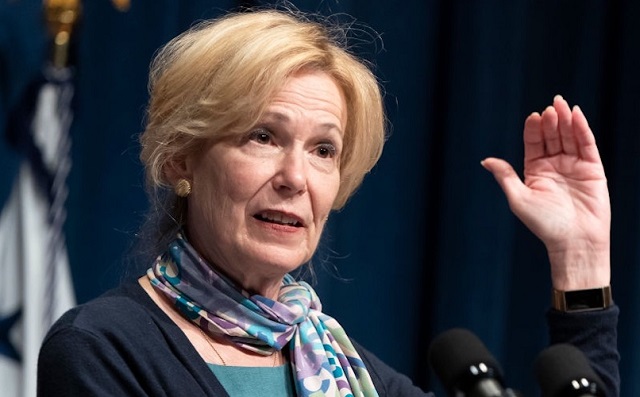
 COVID-192 days ago
COVID-192 days agoFormer COVID coordinator Deborah Birx now admits jabs could have injured ‘thousands’
-

 Opinion2 days ago
Opinion2 days agoCanada’s fertility, marriage rates plummet to record lows: report
-
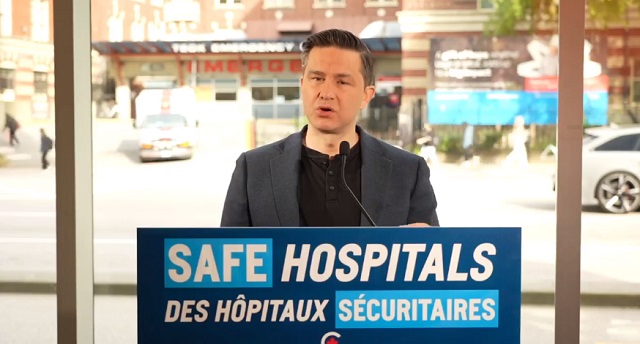
 Addictions1 day ago
Addictions1 day agoPoilievre attacks decriminalization of hard drugs with Safe Hospitals Act
-

 Uncategorized1 day ago
Uncategorized1 day agoRCMP recruitment failure has Alberta advocacy group calling for Provincial Police Service
-
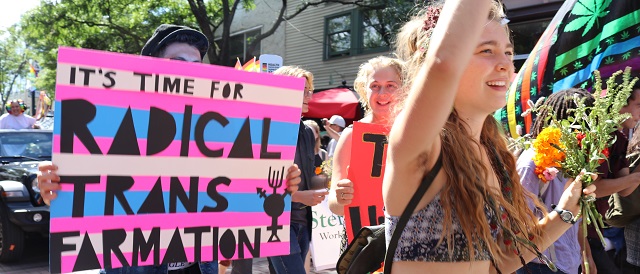
 Health24 hours ago
Health24 hours agoPrivate Footage Reveals Leading Medical Org’s Efforts To ‘Normalize’ Gender Ideology
-

 Alberta23 hours ago
Alberta23 hours agoRed Deer Hospital Lottery – Second Chance Early Bird Prize!!!
-

 armed forces23 hours ago
armed forces23 hours agoTrudeau government has spent $10 million promoting DEI in the military as recruitment flounders
-
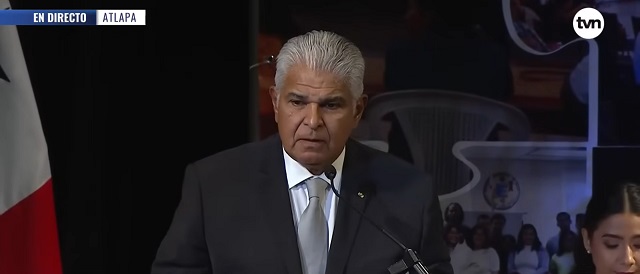
 illegal immigration2 days ago
illegal immigration2 days agoPanama’s Incoming President Wants To Shut Down His Country’s Most Treacherous Route For Migrants — But Will It Work?

